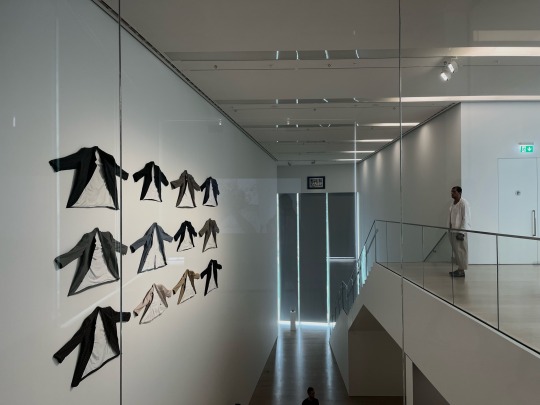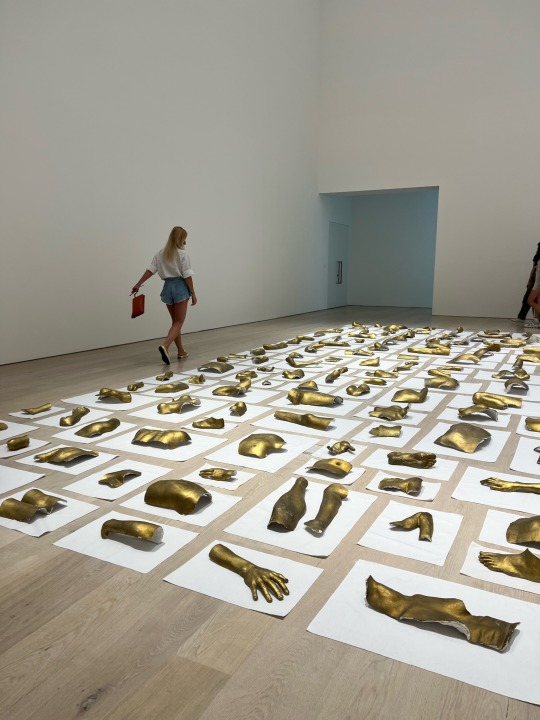#Arteriosclerosis
Explore tagged Tumblr posts
Text





Arteristanbul ✌🏻
2 notes
·
View notes
Text
when in rome!!! haha *takes off my panties and pulls them over my head like an elegant sunday church hat*
2 notes
·
View notes
Text

The Science Research Manuscripts of S. Sunkavally, p437.
#chlorophyll#light absorption#Doppler shift#yellow phosphorus#hydrogen sulphide#strychnine poisoning#vitamin C#poisoning#antidote#potassium permanganate#air embolism#abortion#soapy water#oxalic acid#ionized calcium#deoxycholate#blood pressure#arteriosclerosis#giraffe#Rubner's law#satyendra sunkavally#theoretical biology#manuscript#notebooks
0 notes
Text
On narrative consistency
Okay, look, McDonalds. This is bullshit. Nobody believed your asses two years ago when you said that the McRib was on its “farewell tour” or whatever the hell you called it. Absolutely no one. We all knew that the McRib is always a seasonal or at least short-term item (length of term: however long it takes for pork prices to rise again) and it’s going to go away and come back. Everyone knew…

View On WordPress
#advertising#arteriosclerosis#diabetes#farewell tour#fast food#fat man#filthy lies#humor#idiocy#lies#mcdonalds#merchandising#narrative#pork#rants#stories
1 note
·
View note
Text


0 notes
Text
What Should My Cholesterol Level Be At My Age?
For healthy people (especially under the age of 20), the optimal cholesterol level is total cholesterol of less than 200mg/dL, LDL cholesterol of less than 130mg/dL. Anything over that should be approached cautiously and you may want to work with a healthcare professional to determine the best course of action. Based on your health condition, lifestyle habits, family history, and more, they may recommend supplementing your diet with specific high-quality plant sterols which - after some time - can decrease LDL particles in the blood gradually through lowering blood triglyceride levels. This might not be necessary for everyone but it never hurts to listen to expert advice.
#Cholesterol#HDL#LDL#lifestyle habits#coronary artery disease#plaque#diabetes patients#arteriosclerosis
0 notes
Text
When the Stroke Hits You
by Dr.Harald Wiesendanger– Klartext What the mainstream media is hiding Suddenly severely disabled: A stroke can have dire consequences that are often irreversible. In the worst case, it kills. Preventing it is one of the best reasons for a healthy lifestyle, as the AUSWEGE Foundation recommends to everyone. Does a Covid-19 “vaccination” increase the risk? You’ve just filled the shopping cart…

View On WordPress
#Arteriosclerosis#Atrial fibrillation#Cerebral hemorrhage#Cerebral infarction#Covid-19 vaccination#Covid-19mRNA vaccines#Diabetes#Harald Wiesendanger#hemorrhagic stroke#International Stroke Day#ischemic stroke#metabolic syndrome#SARS-CoV-2 infection#Stroke#Vaccine side effects
0 notes
Link
Peripheral Vascular Disease (PVD): Causes, Symptoms, and Treatment Peripheral Vascular Disease (PVD) is a significant health concern affecting millions worldwide. This article aims to provide a comprehensive understanding of PVD, covering its causes, symptoms, diagnosis, and treatment options. We'll delve into the importance of early detection and management, equipping you with essential knowledge for a healthier life. Understanding PVD: A Closer Look Peripheral Vascular Disease, commonly referred to as PVD, encompasses a range of conditions that affect the blood vessels outside the heart and brain. At its core, PVD is primarily caused by atherosclerosis, a process where arteries become narrowed and hardened due to the buildup of plaque. Types of PVD PVD isn't a one-size-fits-all condition; it manifests in various forms, with the most common being Peripheral Arterial Disease (PAD) and venous PVD. PAD results from narrowed arteries, reducing blood flow to the limbs, while venous PVD involves issues with the veins, often leading to blood pooling in the legs. Symptoms of PVD Recognizing the Telltale Signs Identifying the symptoms of PVD is pivotal for timely intervention. Here are some common indicators to watch out for: Leg Pain or Cramping: Individuals with PVD often experience pain, cramping, or aching in the legs, particularly during physical activity. Numbness or Weakness: Numbness, weakness, or a feeling of heaviness in the legs can be early signs of compromised blood flow. Coldness in Extremities: Persistent coldness in the hands or feet may indicate poor circulation. Skin Discoloration: Changes in skin color, such as paleness or blueness, can be attributed to reduced blood flow. Risk Factors Unveiling the Contributors to PVD Understanding the risk factors associated with PVD is essential for proactive health management. Here are key factors that can increase your susceptibility: Smoking: Smoking remains one of the most significant contributors to PVD, accelerating the hardening of arteries. Diabetes: Individuals with diabetes are at higher risk due to potential damage to blood vessels. High Blood Pressure: Hypertension strains blood vessels, making them more susceptible to PVD. High Cholesterol: Elevated cholesterol levels contribute to plaque buildup, a primary PVD trigger. Diagnosis and Evaluation Crucial Steps in Identifying PVD Timely diagnosis is paramount in managing PVD effectively. Healthcare professionals employ various methods to evaluate and diagnose PVD. Here's a glimpse into the diagnostic process: Ankle-Brachial Index (ABI) Test: ABI is a non-invasive test that measures blood pressure in the arms and ankles, aiding in the assessment of blood flow. Doppler Ultrasound: This imaging technique uses sound waves to create images of blood flow within the arteries, helping identify blockages. Angiography: Invasive angiography involves injecting contrast dye into the arteries to visualize blood flow and pinpoint areas of concern. Treatment Options Navigating the Path to Wellness The management of PVD involves a spectrum of treatment options tailored to individual needs. Here's an overview of strategies aimed at improving circulation and enhancing well-being: Lifestyle Changes: Embracing a heart-healthy lifestyle through balanced nutrition, regular exercise, and smoking cessation can significantly mitigate PVD progression. Medications: Physicians may prescribe medications such as antiplatelet drugs and statins to manage risk factors and improve blood flow. Minimally Invasive Procedures: Interventions like angioplasty and stenting can effectively open narrowed arteries, restoring proper blood flow. Surgical Interventions: In severe cases, bypass surgery may be necessary to reroute blood around severely blocked arteries. Living with PVD Empowering a Fulfilling Life Living with PVD necessitates adjustments and strategies to ensure a fulfilling life. Here, we'll explore practical tips and insights for individuals managing PVD, including: Pain Management: Techniques for addressing leg pain and discomfort. Mobility: Tips for maintaining mobility and staying active despite PVD. Support and Resources: Information on support groups and resources available for those with PVD. Prevention Guarding Against PVD Prevention is a powerful tool in the fight against PVD. We'll delve into proactive measures individuals can take to reduce their risk, including: Healthy Eating: Dietary choices that support vascular health. Physical Activity: The role of exercise in maintaining circulation. Regular Check-Ups: The importance of routine medical assessments. frequently asked questions (FAQs) related to Peripheral Vascular Disease (PVD) along with their answers, formatted in Markdown: Q1: What is Peripheral Vascular Disease (PVD)? Peripheral Vascular Disease, often abbreviated as PVD, refers to a group of conditions that affect the blood vessels outside the heart and brain. It typically involves the narrowing or blockage of blood vessels, which can lead to reduced blood flow to the limbs. Q2: What are the common symptoms of PVD? Common symptoms of PVD include leg pain or cramping, numbness or weakness in the legs, coldness in the extremities, and skin discoloration. These symptoms often occur during physical activity and may subside with rest. Q3: What causes PVD? The primary cause of PVD is atherosclerosis, a process where arteries become narrowed and hardened due to the buildup of plaque. Other factors contributing to PVD include smoking, diabetes, high blood pressure, high cholesterol, and aging. Q4: How is PVD diagnosed? PVD can be diagnosed through various methods, including the Ankle-Brachial Index (ABI) test, Doppler ultrasound, and angiography. These tests help assess blood flow and identify blockages in the arteries. Q5: Is PVD a serious condition? Yes, PVD can be a serious condition if left untreated. It can lead to complications such as chronic pain, difficulty walking, non-healing wounds, and in severe cases, tissue loss or gangrene. Q6: Can PVD be prevented? A6: Yes, PVD can often be prevented or its progression slowed. Lifestyle changes such as quitting smoking, adopting a heart-healthy diet, engaging in regular exercise, and managing underlying conditions like diabetes and hypertension can reduce the risk of PVD. Q7: What are the treatment options for PVD? Treatment options for PVD include lifestyle changes, medications (antiplatelet drugs, statins), minimally invasive procedures (angioplasty, stenting), and surgical interventions (bypass surgery). The choice of treatment depends on the severity of the condition and individual factors. Q8: Can PVD be managed without surgery? Yes, PVD can often be managed without surgery. Lifestyle changes and medications are effective in many cases. Surgical interventions are considered when other treatments are ineffective or when there is severe arterial blockage. Q9: Is PVD more common in older adults? Yes, PVD becomes more common with age. However, it can affect people of all age groups, especially those with risk factors such as smoking and diabetes. Q10: Where can I find support and resources for PVD management? Support groups, healthcare providers, and online resources can be valuable for individuals managing PVD. Consult your healthcare professional for guidance and explore reputable sources for information and assistance. Conclusion In conclusion, understanding PVD is the first step towards effective management. By recognizing the symptoms, addressing risk factors, and collaborating with healthcare professionals, individuals can navigate the challenges posed by PVD with confidence. Remember, early intervention and a proactive approach are key to ensuring a healthier, more vibrant life despite PVD.
#Arterial_insufficiency#Arteriosclerosis#Artery_blockages#Atheroembolic_disease#Atherosclerosis#Atherosclerotic_arteries#Blood_circulation_issues#Blood_vessel_narrowing#Claudication#Intermittent_claudication#Leg_pain_due_to_poor_circulation#Limb_blood_flow_problems#Lower_limb_ischemia#PAD_Peripheral_Arterial_Disease#Peripheral_artery_disease#Vascular_disease#Vascular_disorders#Vascular_health_condition#Vascular_occlusive_disease#Vaso_occlusive_disorder#Vasoconstriction
1 note
·
View note
Text
Arteriosclerosis is not curable, but with the right therapy, the course of the disease can be delayed
Atherosclerosis is the hardening and narrowing of the arteries over time, resulting in reduced blood flow to organs and parts of the body. #heartattack #health
Atherosclerosis is the hardening and narrowing of the arteries over time, resulting in reduced blood flow to organs and parts of the body. There is a predisposition to arteriosclerosis and its consequences, and women have a natural protection from female sex hormones when they are younger, which decreases with menopause. Inheritance sex-dependent�� Arteriosclerosis can only be passed down from…
View On WordPress
0 notes
Text
Arteriosclerosis Detector Market Size, Growth Status, Analysis and Forecast 2031
According to a new report published by The Insight Partners, titled, ” Arteriosclerosis Detector Market Forecast | Share and Size – 2030″. The report provides a detailed analysis of the top investment pockets, top winning strategies, drivers & opportunities, Arteriosclerosis Detector market size & estimations, competitive landscape, and changing market trends. The Arteriosclerosis Detector…
View On WordPress
0 notes
Text
Also preserved on our archive (Check out the site for full daily updates!)
By Dave Fornell
New research supported by grants from the National Institutes of Health revealed a history of COVID-19 can double a patient's risk of heart attack, stroke or death.[1] The study, published in Arteriosclerosis, Thrombosis, and Vascular Biology, found that the heightened risks can sometimes last for years after a COVID diagnosis.
The research was led by Cleveland Clinic and the University of Southern California. Anyone who had a COVID-19 infection, regardless of severity, was twice as likely to have a major cardiac event, such as heart attack, stroke or even death, for up to three years after diagnosis, the group found. The risk was significantly higher for patients hospitalized for COVID-19 and more of a determinant than a previous history of heart disease.
The researchers also found that patients with a blood type other an O (such as A, B or AB) were twice as likely to experience an adverse cardiovascular event after COVID-19 than those with an O blood type.
These findings show that the long-term risk associated with COVID-19 “continues to pose a significant public health burden” and the findings warrant further investigation, according to the authors.
Cardiology may see increasing numbers of former COVID patients in the years to come During the pandemic, there were serious concerns that the SARS-CoV-2 virus may cause an increase in future cardiovascular issues in COVID patients. This was based on the larger than expected vascular and myocardial involvement seen in many cases. What was originally thought to be long-term damage subsided in patients overtime. While concerns about heart damage and increased numbers of heart failure patients did not come to pass, this study shows evidence that cardiologists may still see increasing numbers of patients in the years to come.
“Worldwide over a billion people have already experienced COVID-19. The findings reported are not a small effect in a small subgroup,” co-senior study author Stanley Hazen, MD, PhD, chair of cardiovascular and metabolic sciences in Cleveland Clinic’s Lerner Research Institute and co-section head of preventive cardiology, said in a statement. “The results included nearly a quarter million people and point to a finding of global healthcare importance that promises to translate into a rise in cardiovascular disease globally.”
Why do COVID patients have elevated cardiovascular risks? Researchers used U.K. Biobank data from 10,005 people who had COVID-19 and 217,730 people who did not between February and December 2020. Certain genetic variants are already linked to coronary artery disease, heart attack and COVID-19 infection, so researchers completed a genetic analysis to see if any of these known genetic variants contribute to elevated coronary artery disease risk after COVID-19. They found none of the known genetic variants were drivers of the enhanced cardiovascular events observed post COVID-19 infection. Instead, the data highlighted an association between elevated risk and blood type.
Previous research has shown that people who have A, B or AB blood types were also more susceptible to contracting COVID-19, the researchers said.
“These findings reveal while it’s an upper respiratory tract infection, COVID-19 has a variety of health implications and underscores that we should consider history of prior COVID-19 infection when formulating cardiovascular disease preventive plans and goals,” Hazen said. “The association uncovered by our research indicates a potential interaction between the virus and the piece of our genetic code that determines blood type and signals the need for further investigation.”
“Given our collective observations and that 60% of the world's population have these non-O blood types, our study raises important questions about whether more aggressive cardiovascular risk reduction efforts should be considered, possibly by taking into consideration an individual's genetic makeup," explained Hooman Allayee, PhD, of USC’s Keck School of Medicine, who was co-senior author of the paper.
Study link: www.ahajournals.org/doi/abs/10.1161/ATVBAHA.124.321001
#covid#covid isn't over#mask up#pandemic#wear a mask#public health#covid 19#wear a respirator#still coviding#sars cov 2#coronavirus#covid conscious#covid is airborne#covid pandemic#covid19#covidー19#long covid
147 notes
·
View notes
Text

The Science Research Notebooks of S. Sunkavally, p 451.
#acidosis#chronic renal failure#alkaline phosphatase#hypertriglyceridemia#radiation#mercury#arteriosclerosis obliterans#pentoxifylline#diabetes#peripheral neuropathy#thrombus#hyperparathyroidism#psychoses#L-Asparagine#asparaginase#satyendra sunkavally#theoretical biology#manuscript#diaries#cursive handwriting
0 notes
Text
Chiron: where is our physical (and mental) wound?
I'm currently reading a book about Chiron (did you know it's actually half asteroid, half comet? me neither), which inspired me to make this post. I'm in no way an expert in medical astrology, just a curious owl that wants to learn more about every branch of astrology out there (my Sag Venus loves it!!🤭)
DISCLAIMER!!! I'm not a doctor. If you've been feeling any symptoms described here, TALK WITH YOUR DOCTOR, NOT WITH ME

Observation: Before we dive in, i'd like to mention that the position of Chiron in the houses is important. Not every house placement suggests having a poor physical condition. The most prominent Chiron placements when it comes to having a medical condition are: Chiron in 1st house (house of self, visible illnesses), Chiron in 5th house (illnesses since birth/early childhood), Chiron in 6th house (house of health, if Saturn is also sitting there it points to chronic illnesses), Chiron in 8th house (house of death, may point to severe diseases or poor reproductive health) and Chiron in 12th house (house of the unconscious, deals with mental illnesses)
Honorable mention to Chiron in 3rd house and Chiron in 9th house as they represent accidents while travelling. If Chiron is heavily afflicted in these houses (unless it's also conjuncting Jupiter), it may point to...let's just say you're gonna be in a hospital bed in a vegetative state, but remember, nothing has a 100% possibility of happening, you're just more susceptible to it happening. I suggest checking the position of Chiron in Solar Return charts for the possible timing of it happening (look for Chiron in 3rd house/Chiron in 9th house as it activates your natal Chiron)
Without further do, let's dive in⚕️
Chiron in Aries: frequent headaches, frequent nose bleeds, teeth problems (sensitive teeth, tooth decay), deafness, skull fractures, cerebral anemia, brain tumours, hemophilia, epilepsy, BPD
Chiron in Taurus: frequent colds, frequent voice loss, thyroid problems (goiter, hyperthyroidism, hypothyroidis, etc.), tonsilitis, OCD
Chiron in Gemini: lung problems (asthma, tuberculosis, pneumonia, etc.), speech problems (stuttering, cluttering, mutism), alzheimer's disease, ADHD, OCD
Chiron in Cancer: frequent stomach pain, prone to lactose intolerance, (for girls) breast lumps, breast cysts, breast infections, nipple discharge, depression, anxiety
Chiron in Leo: prone to insolation, frequent heart palpitations, chest pain, hypertension, hypotension, arteriosclerosis, scoliosis, kyphosis
Chiron in Virgo: frequent bloating, prone to gluten intolerance, chronic allergies, diabetes, rabies, autism, ADHD, OCD
Chiron in Libra: prone to acne, frequent lower back pain, disc herniation, spondylolisthesis, chronic kidney disease, kidney stones
Chiron in Scorpio: frequent pain down there, chlamydia, gonorrhea, syphilis, HIV/AIDS, depression
Chiron in Sagittarius: frequent pain in the hips, prone to hips dislocation, cirrhosis, sciatica
Chiron in Capricorn: prone to knees dislocation, osteoarthritis, bone problems (osteopenia, osteoporosis), gout, depression
Chiron in Aquarius: electrical injuries, shin splints, osteofibrous dysplasia, ankle sprain, ankle fractures, poor blood circulation, schizophrenia
Chiron in Pisces: prone to break toes, athlete's foot, bunions, addison's disease, hormonal deregulation, aphantasia, psychosis, schizophrenia, anxiety
Yes, i'm aware of the fact that it's a generational planet and it moves very slowly through signs

BONUS: It's important to take into consideration all planets that conjunct, square or opposite Chiron (regardless if they're personal or generational) + the Ascendant for additional info about our illnesses
Ex. Let's take me as an example. My Chiron is in my 10th house in Capricorn squaring Saturn in 4th house (so double Capricorn energy) and Aries Ascendant. Guess what? I've got TMJ (basically a jaw disorder affecting the joints) and i've got it from my fam -_- (Saturn rules tradition i love my fam)
I also believe that having a heavy afflicted Chiron in general makes someone prone to having a medical condition, even if it's not in the houses mentioned previously (like in my case). However, these people are more focused on the main meaning of the house, not their health problems. They tend to ignore their health problems or they just don't care
I hope you enjoyed my post and found it insightful :)
What's your wound? Lmk in the comments your placements and your illnesses
Kisses xoxo
#astro#astro community#astro placements#astrology#astro posts#astro observations#medical astrology#chiron#chiron in aries#chiron in taurus#chiron in gemini#chiron in cancer#chiron in leo#chiron in virgo#chiron in libra#chiron in scorpio#chiron in sagittarius#chiron in capricorn#chiron in aquarius#chiron in pisces#astroblr#astro notes#astrology notes#astro blog
568 notes
·
View notes
Quote
She thought about how no one had taught us to grow old, how we didn’t know what it would be like. When we were young we thought of old age as an ailment that affected only other people. While we, for reasons never entirely clear, would remain young. We treated the old as though they were responsible for their condition somehow, as though they’d done something to earn it, like some types of diabetes or arteriosclerosis. And yet this was an ailment that affected the absolute most innocent.
Olga Tokarczuk, Flights
131 notes
·
View notes
Text
Article date: October 10, 2024
Infection from COVID-19 appeared to significantly increase the risk of heart attack, stroke, and death for up to three years among unvaccinated people early in the pandemic when the original SARS-CoV-2 virus strain emerged, according to a National Institutes of Health (NIH)-supported study. The findings, among people with or without heart disease, confirm previous research showing an associated higher risk of cardiovascular events after a COVID-19 infection but are the first to suggest the heightened risk might last up to three years following initial infection, at least among people infected in the first wave of the pandemic. Compared to people with no COVID-19 history, the study found those who developed COVID-19 early in the pandemic had double the risk for cardiovascular events, while those with severe cases had nearly four times the risk. The findings were published in the journal Arteriosclerosis, Thrombosis, and Vascular Biology.
Read the rest.
30 notes
·
View notes
Text

At the National Institute for Medical Research at Mill Hill: King George VI and Queen Elizabeth watch Dr. C. M. Chu of the Virus Research Division at work. // May 5, 1950
The visit’s purpose was for the King to officially open the Institute, which had relocated to Mill Hill. In a speech he acknowledged his own debt to medical research:
‘I can tell you personally that I am indeed thankful and grateful for the work of this Institute. For I am told that had it not been for medical research I should not be standing here on my two legs today.’
(When the King was diagnosed with arteriosclerosis late in 1948 there was a danger of gangrene developing, and at first there were fears that his right leg might have to be amputated.)
ABOVE: The King and Queen in the Institute’s library, where the King signs a visitors’ book. [no sound] // x
Further (brief) footage can be seen HERE & HERE
#King George VI#Queen Mother#British Royal Family#1950#1950s#video#if you look closely#i think he is wearing glasses when signing the book
35 notes
·
View notes